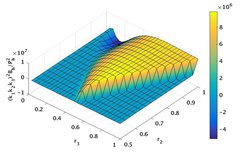A key test of the quantum mechanical origin of these fluctuations is their probability distribution, which characterises the probability of the fluctuation having a particular amplitude at a given point in the Universe. For free fields with ground state quantum fluctuations, this distribution is Gaussian (see Fig. 1). However, interactions of the fields with other fields or with themselves in the early Universe make this distribution non-Gaussian. This non-Gaussianity is therefore a crucial probe of interactions of fields during inflation, giving us a window into physics at energy scales much beyond the reach of any particle accelerator on Earth. 
Photons are strongly coupled to electrons until the temperature is sufficiently low to form neutral atoms, which means that the oldest light that we see was emitted when the Universe was already 380 000 years old. Gravitational waves, on the other hand, travel to us almost unimpeded from the beginning of the Universe and are thus a much cleaner probe of inflationary dynamics. While these gravitational waves are difficult to observe directly, they leave their imprint as a unique pattern of polarisation in the CMB. See: http://www.mpa-garching.mpg.de/554924/hl201806 |
